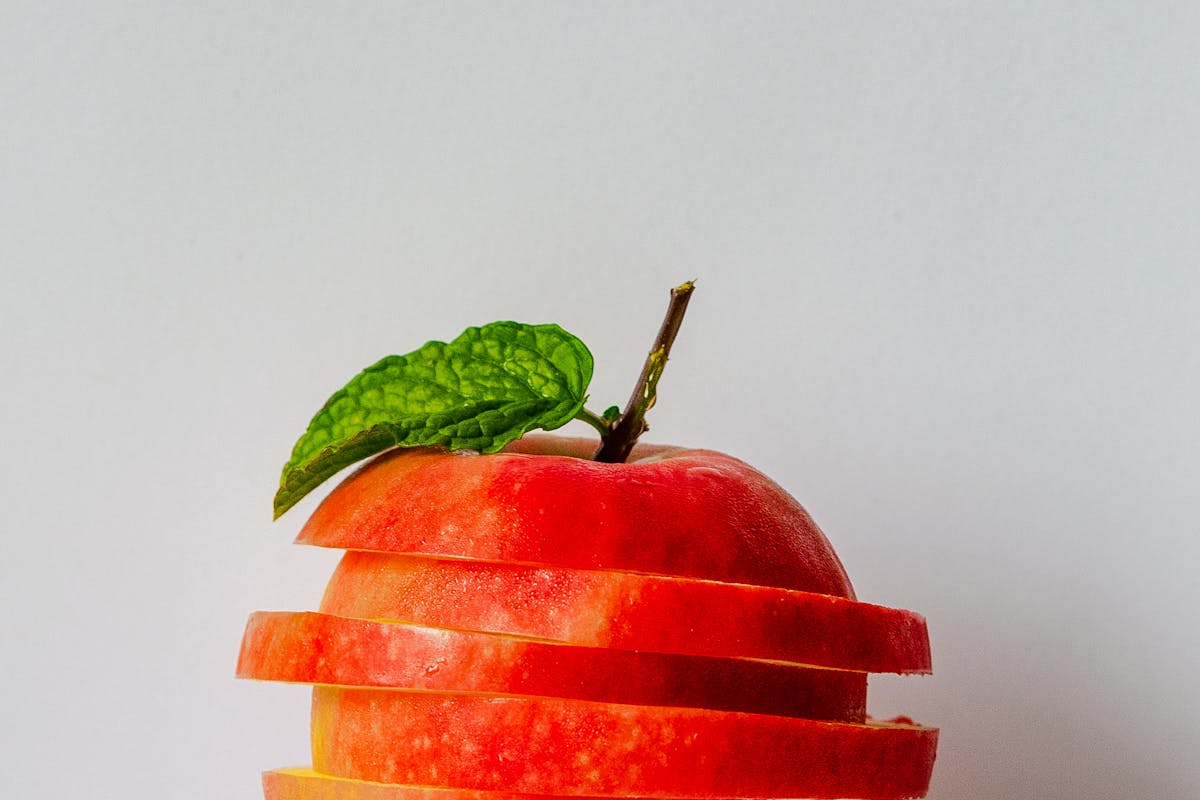Food & Drink
Apple That Is Like a Jazz and Braeburn Blend Taste

Apples are a beloved fruit, renowned for their crisp texture and delightful flavors. Among the myriad of apple varieties, Jazz and Braeburn stand out for their unique taste profiles. In this article, we’ll explore what makes these apples special, how they compare to one another, and why you might want to incorporate them into your diet.
Introduction to Apple Varieties
Apples come in numerous varieties, each with its distinct flavor, texture, and aroma. Understanding these differences can enhance your eating experience. Two apple varieties, in particular, have garnered attention for their exceptional qualities: the Jazz and Braeburn apples.
What Makes Jazz and Braeburn Apples Unique?
Jazz apples are a cross between the Royal Gala and the Braeburn. This unique blend gives Jazz apples a sweet and tangy flavor profile. Braeburn apples, on the other hand, are celebrated for their balanced sweet-tart taste. The combination of these two varieties offers a distinct experience for apple lovers.
Flavor Profiles of Jazz and Braeburn Apples
Tasting Notes: Sweet and Tart
Jazz apples are known for their juicy sweetness with a hint of tartness. This combination makes them a perfect snack. They have a rich flavor that lingers on the palate, making them suitable for both fresh eating and cooking.
Braeburn apples, in contrast, provide a more robust taste. They have a firm texture and a perfect balance of sweetness and acidity. This balance is what makes them versatile in both sweet and savory dishes.
Crisp Texture: A Key Characteristic
One of the most notable features of both Jazz and Braeburn apples is their crisp texture. When you bite into a Jazz apple, you experience a satisfying crunch. Braeburn apples also deliver that crunch, which is often sought after in a good apple. This texture contributes to their popularity in fruit salads and snacks.
Comparing Jazz and Braeburn Apples
Similarities in Flavor
Jazz and Braeburn apples share some similarities. Both varieties offer a harmonious blend of sweetness and tartness. They are excellent for snacking, as their flavors are well-balanced, making them enjoyable without overwhelming the palate.
Differences in Taste and Texture
While both apples are delicious, there are notable differences. Jazz apples lean more towards sweetness, while Braeburn apples have a pronounced tartness. This distinction can affect the way they are used in recipes. For instance, Braeburns are often preferred for pies and baking due to their ability to hold their shape.
| Feature | Jazz Apples | Braeburn Apples |
|---|---|---|
| Flavor Profile | Sweet with a hint of tartness | Balanced sweet-tart flavor |
| Texture | Crisp and juicy | Firm and crunchy |
| Best Uses | Snacking, salads, and fresh dishes | Baking, pies, and cooking |
Culinary Uses for Jazz and Braeburn Apples
Recipes Featuring Jazz Apples
Jazz apples shine in salads and desserts. Their sweetness complements various ingredients. Try them in a fresh fruit salad or as a topping for yogurt. They can also be sliced and served with cheese for a delightful appetizer.
Delicious Dishes with Braeburn Apples
Braeburn apples are fantastic for cooking. Their firm texture makes them perfect for pies and tarts. Here’s a simple recipe for a Braeburn apple crisp:
Braeburn Apple Crisp Recipe
- Ingredients:
- 4 Braeburn apples, peeled and sliced
- 1 cup brown sugar
- 1 cup rolled oats
- ½ cup flour
- ½ cup butter, melted
- 1 tsp cinnamon
- Instructions:
- Preheat your oven to 350°F (175°C).
- In a bowl, mix the sliced apples with brown sugar and cinnamon. Place them in a baking dish.
- In another bowl, combine oats, flour, and melted butter. Sprinkle the mixture over the apples.
- Bake for 30-35 minutes until the top is golden brown.
Health Benefits of Eating Apples
Nutritional Value of Jazz and Braeburn Apples
Both Jazz and Braeburn apples are nutritious. They are low in calories and high in fiber, making them an excellent snack option. A medium-sized apple contains about 95 calories and provides essential vitamins like vitamin C and potassium.
Why You Should Include Apples in Your Diet
Eating apples can contribute to better health. They are rich in antioxidants, which can help reduce the risk of chronic diseases. Additionally, the fiber in apples aids digestion and promotes a feeling of fullness.
Apple Harvest Seasons: When to Find Them
Best Times to Pick Jazz and Braeburn Apples
Jazz apples are typically harvested from late summer to early fall, while Braeburn apples are harvested in the fall. This seasonality means you can find fresh varieties at local markets during these times.
Tips for Picking the Perfect Apples
How to Choose the Best Jazz and Braeburn Apples
When selecting Jazz and Braeburn apples, look for:
- Color: Choose apples that have vibrant colors. Jazz apples should be a mix of red and yellow, while Braeburns have a red and green hue.
- Firmness: Give them a gentle squeeze. They should feel firm, not soft.
- Skin: Check for smooth skin without blemishes.
Conclusion: Embracing Unique Apple Flavors
In conclusion, Jazz and Braeburn apples offer a delightful blend of flavors and textures that appeal to a wide range of palates. Their unique qualities make them versatile for various culinary applications. Whether you enjoy them fresh or cooked, incorporating these apples into your diet is a tasty way to boost your nutrition. So, the next time you’re at the market, consider picking up some Jazz and Braeburn apples to experience their incredible flavors!

-

 Tech2 months ago
Tech2 months agoTwastia.com: Your Go-To for Digital Solutions
-

 Delaware2 months ago
Delaware2 months agoNew Castle Beer: A Delaware Favorite and Its Rich History
-

 Features2 months ago
Features2 months agoCleetus McFarland Net Worth in 2024
-

 California2 months ago
California2 months agoWhere to Buy Kangertech T3S Coils in Oakland, California: Best Options
-

 California2 months ago
California2 months agoCosts of Root Canal in Berkeley, Oakland, and Across California
-

 Idaho2 months ago
Idaho2 months agoRake Up Boise 2024: Guide to Idaho Community Cleanup Event
-

 Texas2 months ago
Texas2 months agoDallas Cowboys Helmet: A Texas Icon and NFL Legacy
-

 Alaska2 months ago
Alaska2 months agoAre Wintergreen Plants in Alaska Edible?






